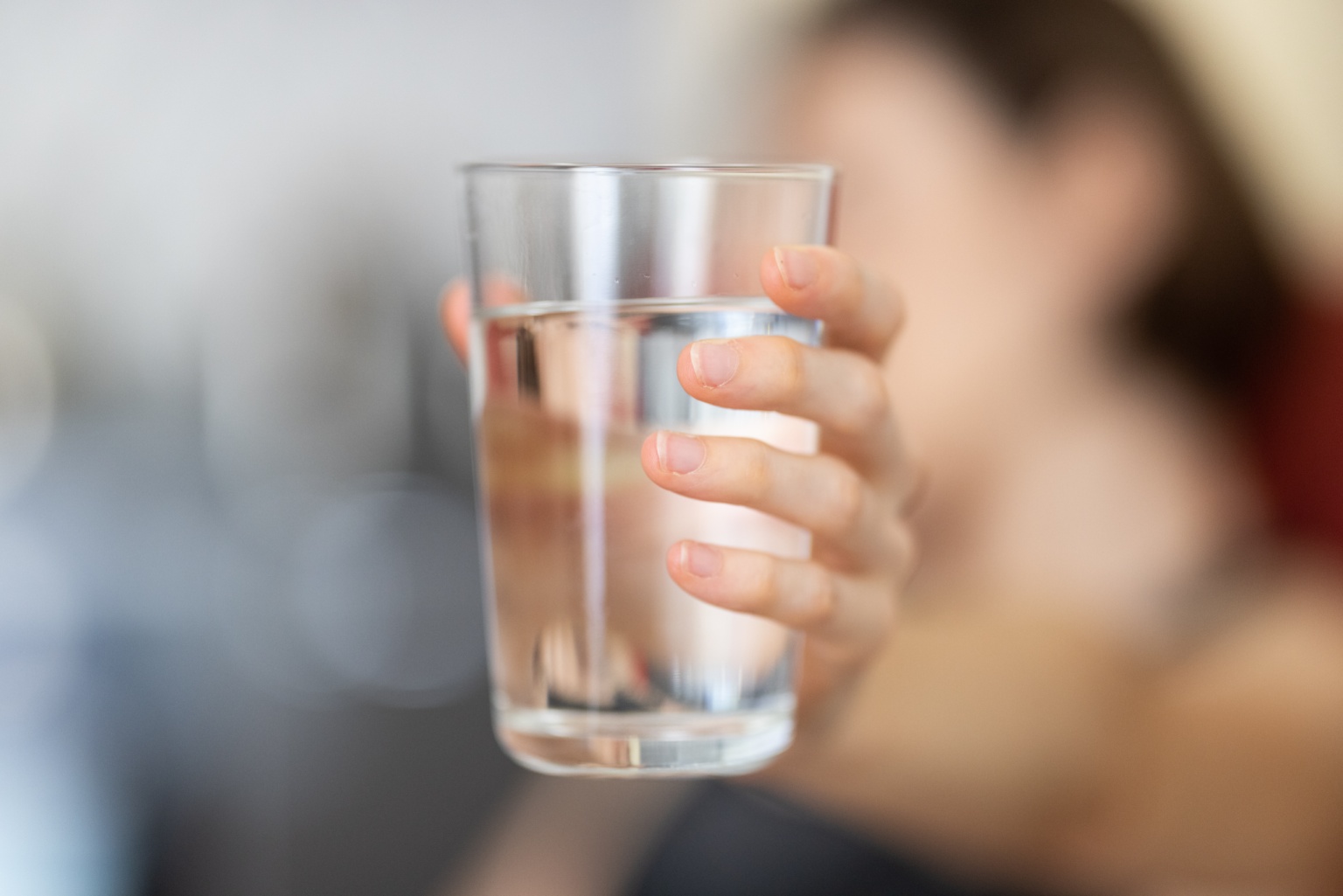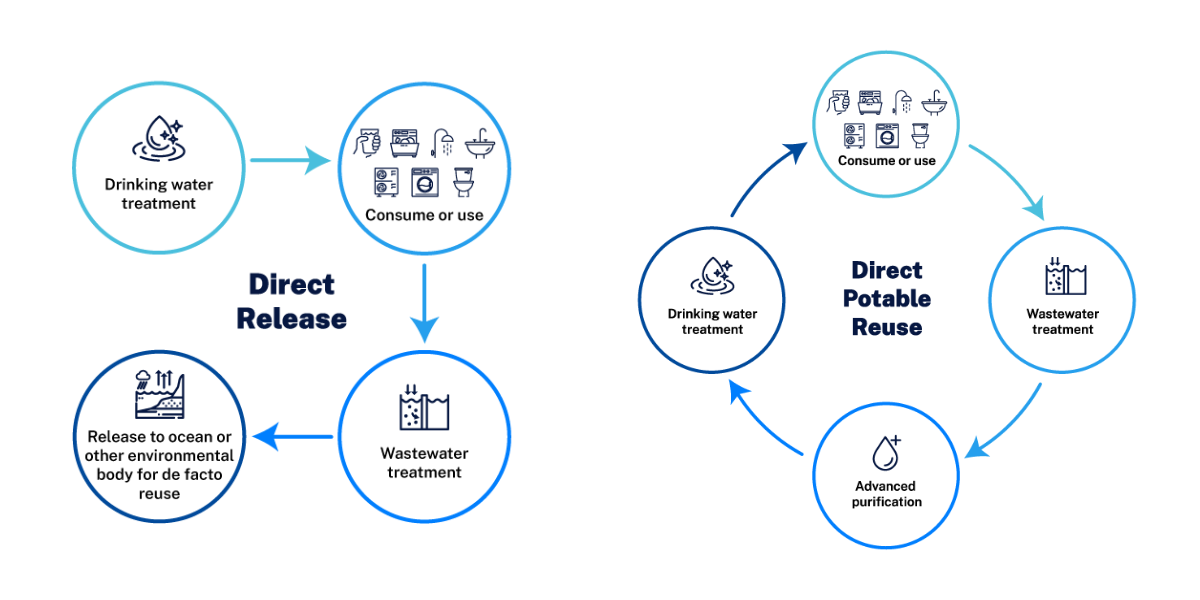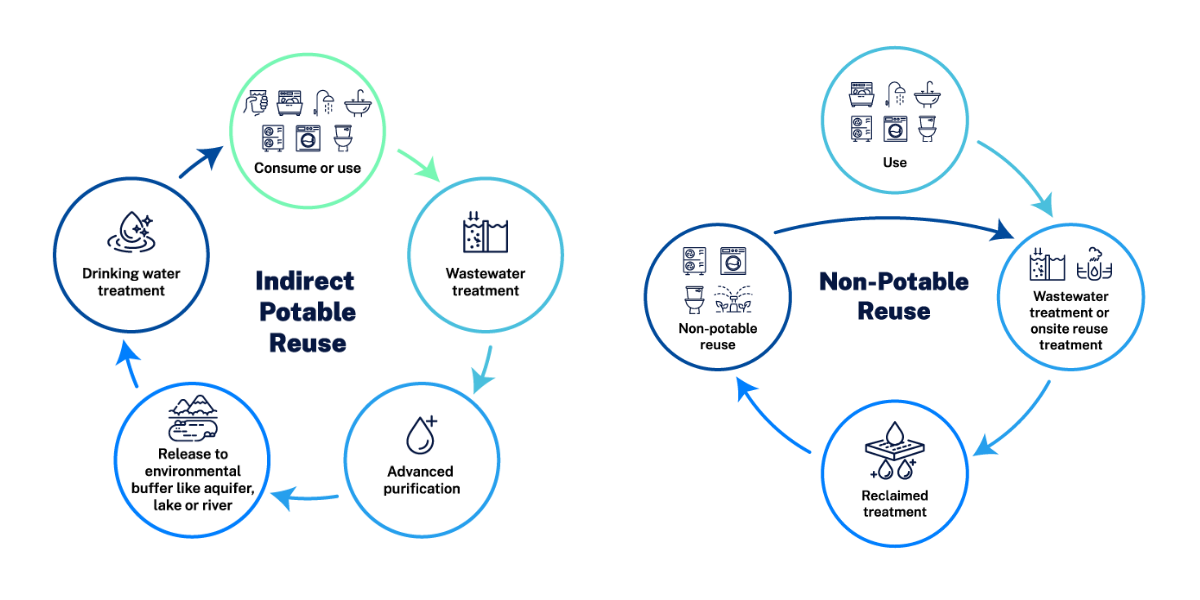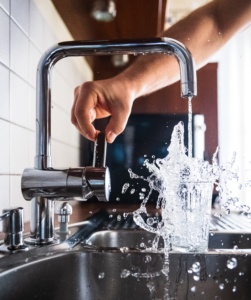The difference between direct potable reuse, non-potable reuse, and indirect potable reuse


The recent approval from California’s State Water Resources Control Board to allow local water agencies to convert wastewater directly into potable (drinking) water shows a changing tide in public perception toward water reuse technology and is a significant step forward for a state consistently grappling with water scarcity issues. It’s also raised some questions around current water reuse practices and the difference between direct, indirect, and non-potable water reuse.
It’s important to remember that all water on Earth is recycled, and the journey to reach your tap vary depending on where you live. In a centralized municipality, the wastewater from homes and businesses is treated at a central treatment plant. The treated water can then be discharged into the environment or reused. If the water is discharged into the ocean or another environmental body where recovery of the water is not feasible, that is known as direct release, and not a form of reuse. Alternatively, the treated water can be reused: the three options under the umbrella option of “reuse” are known as non-potable reuse, indirect potable reuse, and direct potable reuse.

Non-potable vs. indirect vs. direct reuse
Non-potable, indirect potable, and direct potable reuse are all methods of recycling and reusing treated wastewater, but they differ in how the reclaimed, or treated, water is used, as well as the treatment processes involved.
- Non-Potable Reuse: Non-potable reuse (NPR) uses treated wastewater for purposes other than drinking water. This type of reclaimed water is typically used for applications like landscape irrigation, industrial processes, laundry, HVAC cooling towers, and toilet flushing. Non-potable reuse uses many of the same treatment processes as direct and indirect reuse, but non-potable reuse is only required to meet water quality standards set for the non-potable end-use, which can vary based on the end-use. Therefore, even if the non-potable water quality exceeds the minimum requirements, it is not monitored to the same rigor and therefore not allowed to be labelled “potable.”
At Epic, we utilize this method of reuse to help buildings reuse up to 95% of their wastewater and our OneWaterTM treatment system produces a highly purified final product that is guaranteed to meet regulatory requirements for interior and exterior recycled water reuse. - Indirect Potable Reuse: Indirect potable reuse (IPR) is a form of wastewater recycling where treated wastewater is introduced into an environmental buffer, such as an aquifer or a surface water reservoir, withdrawn after a designated length of time and then treated again to meet drinking water quality standards. In IPR, the reclaimed water is mixed with natural water sources and undergoes additional treatment and dilution processes. This approach provides an environmental barrier to ensure the safety of the drinking water supply by mimicking natural dilution processes. Many wastewater treatment plants already use a combination of discharge and indirect potable reuse.
- Direct Potable Reuse: Direct potable reuse (DPR) is the most advanced form of wastewater recycling, where treated wastewater is purified to drinking water standards and then immediately reintroduced into the drinking water distribution system. This means that the reclaimed water is intentionally blended with conventional sources of drinking water and can be used for human consumption. DPR involves highly advanced treatment technologies, including multiple steps of purification and consistent water quality monitoring to ensure the water is safe for drinking.
The key differences between these three methods of reuse are 1) the allowable end uses, 2) the regulatory requirements, and 3) the time involved in the treatment process. The choice of which method to use depends on factors like the level of water scarcity, the available technology, regulatory requirements, and public acceptance. All three methods can play a crucial role in sustainable water resource management and can help alleviate the pressure on freshwater sources.
What does the approval of DPR mean for California residents?
 To be clear, direct potable reuse isn’t a novel concept, and California isn’t the first state to offer this option. Colorado and Texas have already implemented direct potable reuse regulations, and both Florida and Arizona are in the process of developing regulations as well.
To be clear, direct potable reuse isn’t a novel concept, and California isn’t the first state to offer this option. Colorado and Texas have already implemented direct potable reuse regulations, and both Florida and Arizona are in the process of developing regulations as well.
But with California’s approval of DPR, wastewater treatment plants in California will now have the option to upgrade their processes to the framework required for direct potable reuse. The new rules – which have been in the making for more than a decade and are mandated by a state law – will help provide a renewable and reliable supply for a state that faces drought from climate related changes. However, as with most major policy changes, it’s expected that the first facilities that will implement the upgraded process are still several years away.
Nevertheless, we are excited to see the water reuse revolution growing in this country and in the spirit of the popular saying: “As California goes, so goes the nation.”

